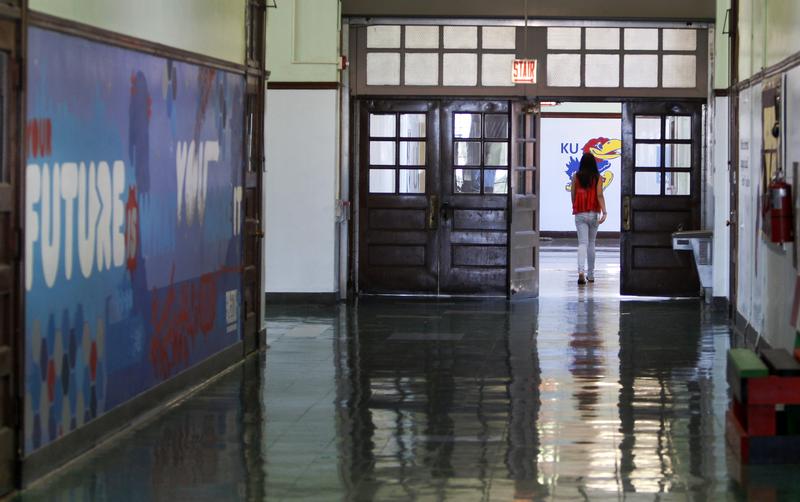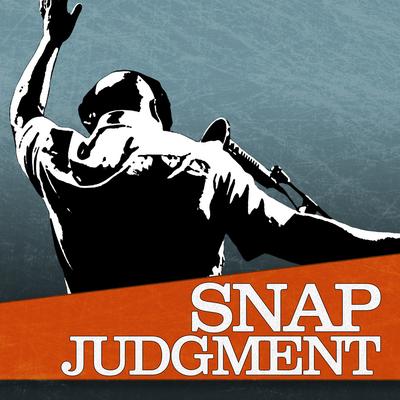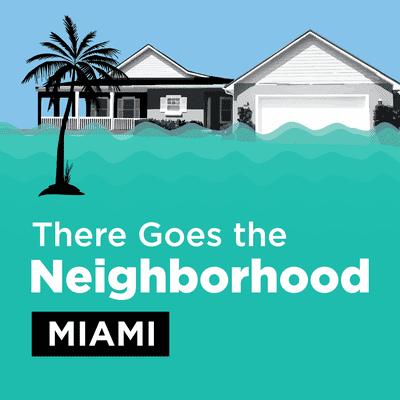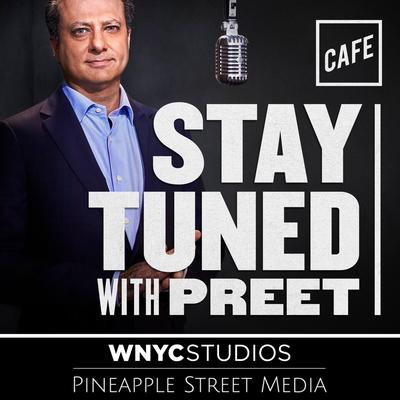When Chicago Closed 50 Public Schools at Once

Announcer: Listeners-supported, WNYC Studios.
Kai: It's Notes from America. I'm Kai Wright. A decade ago, Chicago closed 50 public schools, each of which were said to be under-enrolled and underperforming. It was the largest mass closing in our nation's history, and the overwhelming majority of the schools were located in Black and Brown neighborhoods. Rahm Emanuel, who was mayor at the time, promised that students would be moved to better schools with more resources and the buildings themselves would be transformed into new community assets. Our friends at WBEZ in Chicago have partnered with the Chicago Sun-Times to take a hard look at what actually happened.
A team of reporters spent six months visiting the shuttered buildings, talking with dozens of neighbors, and reviewing thousands of public documents. What they found is unsettling. The school closures left an enormous mark on the affected neighborhoods and on the city as a whole. I spoke with WBEZ's Sarah Karp and Lauren FitzPatrick of the Sun-Times about the reporting and about what lessons other cities might learn from Chicago. Sarah and Lauren, thanks for coming on the show.
Sarah: Thank you for having us.
Lauren: Very much.
Kai: So there is a moment in your reporting where you reflect on a community meeting that the Board of Education held at the beginning of this process in which everyone wanted to sort of share their piece. They were all allotted two minutes to talk. You talk about a young girl who had written a speech and began crying in the middle of her speech. Lauren, can you tell me that story? I think it's a good place to start our conversation.
Lauren: So I was definitely at that hearing in 2013. It was the winter. It was fairly early on in the process. Hundreds of schools had been tapped as potential for closure. In that gym, it was a weekend, so the gym was really full of ordinary people, families, school staffers, and kids. One of the kids who gets up to speak on behalf of her school starts to cry. She's trying to communicate to these officials, sitting at a couple of folded tables at one end of the gym how worried she is that her friends are not all going to make it to the new school if her school gets closed. She sobs so hard that she can't talk anymore. It's what happens when you cry, right?
Kai: Right.
Lauren: And the officials are watching the timer and the little girl is crying. At two minutes they say, "Thank you very much." They call the next name. This kid is devastated, first of all, because she's so worried that her school is going to close. Second of all, she couldn't even finish what it was she was trying to say to do her little part to try to save it.
Speaker 4: He's not caring about our safety. He only cares about his kids. He only cares about his kids.
Speaker 5: No school closed. No school closed.
Speaker 6: You are not listening to the community that's in front of you.
Kai: The city made some big promises about how closing the schools would improve things for students, and for the neighborhoods, and for the city's finances. Sarah, what were some of those promises?
Sarah: There were three things that we really identified as the promises made by the mayor at the time, which was Rahm Emanuel. One of them was that kids will go to better schools, so they'll have more opportunity. Another one was that the actual buildings of the schools that are being vacated will be quickly repurposed, used for something else. The other thing was that the schools have all this investment and so you're losing one school, but then you're getting a better school, not just for the kids who left the school, but just for the community.
Kai: Was the idea behind this that they were under-enrolled and underperforming, right? That's the basic point. There were not enough students in these schools and so if we close them, we can give you these three new great things.
Lauren: I think we almost need to take even a further step back though, I think the reason they talked about closing schools at all is because Chicago Public Schools, Chicago the city, it had a fixed amount of money to put toward educating kids and taking care of buildings. The school district reached a point, Mayor Emanuel said, that continuing in this way with so few children in some schools was just unsustainable for everyone.
Sarah: In other words, we were spending resources thin. The other thing you have to remember is that in the previous, 10, 15 years, the school district opened up more than a hundred new schools, so the capacity had grown while the number of students had decreased. The school district also was in a state of reckoning with some of the decisions made over the last 15 years, including that, under the former mayor, Richard M.Daley, they hadn't been paying the teacher's pension system. There was decades worth of state underfunding. There's all these dynamics going on that made the explanation for closing these schools very relevant.
Kai: Which is to say, there were a lot of choices for a long time that led to as Lauren, as you put it earlier, that the resources were spread too thin. That was a real problem. That's not a fantasy problem in your reporting. This was actually something that was a challenge.
Sarah: Well, it is, but it was also, like you said, decisions. There were decisions that were made that created these conditions. It wasn't just like a hurricane. There was reality that the resources were spread thin, but there was a reason why that reality came true.
Lauren: The kicker is here, as in other cities across the country, we're in a lot of ways back where we started 10 years ago with declining enrollment and buildings that are that much older and in need of all kinds of investment.
Sarah: Right, and facing a budget shortfall. Once the federal COVID relief money runs out, the school district will again be in some stage of budget crisis. I'm sure people will be asking these same questions again.
Kai: It's Notes from America. We'll be right back. What's the actual core problem that needs to be solved here? I mean the challenges that led to these school closures are not unique to Chicago. Declining enrollment, aging buildings, budget pressures, but what's the real impediment here to dealing with these things? Why is it so complicated?
Sarah: I think at the root is really trying to consider whether the decisions that are made help children and families. Sometimes decisions are made with the best intentions, but they have a lot of collateral damage and sometimes the intentions are different than education that are made in the school system and even beyond the school system, a lot of things happened in Chicago that are connected, I mean, including the plan for transformation which was they took down all the public housing projects, the high-rises in the city, and they were supposed to replace them with row houses, but they've done far fewer of these types of subsidized housing than they promised.
We have a situation where a lot of people were forced out of the city because they didn't have a place to stay, and then they were not able to return, and there are not places for them to return. We have a lot of those, we have factors even beyond the school system that go into it.
Lauren: I think that's something that our reporting hammered home for us, which is that schools, they don't stand alone in a community. They're woven into the community. They're inextricably linked with what's going on around them. They're expected to serve a lot of needs of the community so if you have neighborhoods that are having a hard time and lack for investment, the schools are going to reflect that too. There's a little bit of maybe chicken and egg here going on too that "fixing" the schools helps but it's not enough to repair a neighborhood.
Kai: Let's talk about the effect on neighborhoods, actually, because that's a big part of your reporting here. Both of you along with your colleague Nader Issa visited all 46, I believe, locations, where these schools were closed. What did you see? What are your reflections on what happened to these shuttered schools having visited them?
Sarah: A lot of them were still boarded up. If they were owned by the school district, they were somewhat taken care of. Somebody was coming out there to mow the lawn every now and then.
Lauren: I was shocked when we realized that of the 46 buildings at the time that we published our stories, 26 of them were not in use doing anything at all.
Kai: It's a really shocking number.
Sarah: It's a lot.
Kai: Which is interesting too, when you think about the flip side, I know both of you as folks who have covered schools, can talk about the role that an open school plays in a neighborhood. That's almost the exact opposite effect that a school has in a neighborhood. Can you describe that a little bit and what we do know about what schools do in communities?
Lauren: They impose their own rhythm on the community. You can tell when the bell is going to ring because you hear all the kids playing. You hear families in and out of school. It's just such an infusion to a neighborhood. I tend to think of them as decently good neighbors. When they're functioning, someone's always around. They are well-kept. People are walking back and forth, so you could imagine families choosing to live close to school so their children can walk and have friends in the neighborhood and everything else. If the school closes, it's like the bottom just drops out.
Sarah: We talked to this one older couple whose family, the man's family had lived in that house since was 1870s. It was like forever.
Lauren: 1880s, I think.
Sarah: 1880s. Literally, he lived there both as a child and then again as a grown adult with a child. His wife was saying, she used to listen to the kids coming and going and to hear them greet each other and run. Then now, it's just very silent. One of the things that's interesting about that is that there is a proposal to put housing for ex-offenders and some social service for ex-offenders in that building. While they think that there does need to be housing for ex-offenders, they're very concerned because what a difference of a community that would be staying across the street from them.
Kai: What are the buildings that are back in use, what are some examples of what they're being used for?
Lauren: Housing is one example of use. Some very fancy apartments and some very fancy condos. There's some low-income housing for seniors. One of the smaller buildings that closed, it's the headquarters for a fraternity.
Kai: Oh, wow.
Lauren: One of them became a walk-in office for the Chicago Housing Authority so clients can drop paperwork off in person, they can meet with caseworkers and have their questions answered in person. That was another really lovely use of a school building, a few where it became daycare centers. Then a few community centers and youth centers, too.
Sarah: One thing that's interesting about the ones that have turned into something is that it took years. One of the nicest places that Lauren and I visited was a youth center, on the far South, on East side of the city. It's now open as a beautiful youth center, but it's just opened like this spring.
Kai: 10 years later.
Sarah: You just think 10 years later something is finally happening with some buildings and how it took a long time. Maybe if you talk about some of the lessons that if other school districts are looking at closing schools, one of the big lessons I think that comes from Chicago is you can't just take a bystander role if you really want these things to be redeveloped. Right now, actually, there's a state law that says that before you close any more schools, you must have a use already in place before you close the school.
You'll have to have a plan in place for what that building is going to become, but without that, it just takes a lot. These are not buildings that are easily used for other things.
Lauren: No. They were purpose-built. If you're a community organization and you're interested in a building, you need a whole lot of money and redevelopment expertise to be able to take a lot of these buildings. I think one of the biggest lessons from Chicago is that redeveloping school buildings in any capacity is just not the job of a school district. It's not the job we want our school district to serve. We want the school system to be educating kids and seeing to their emotional and developmental needs. That part of the process probably should have been turned over to a city department right at the beginning.
Kai: As we wrap this up, I started by asking about the student who was at the board meeting and was emotionally trying to share her relationship to her school. What is the emotional mark that this whole journey has left on the city?
Lauren: I worry about the trust that this process broke. The trust in government and in public bodies that this process broke.
Sarah: I think the kids that were affected are definitely left with this idea that taking away their school was evidence that the school district didn't care about them or the city didn't care about them, and I think that remains with them. There's a lot of results that reverberate today in the city. For one thing, we have a new mayor who was part of the Chicago Teachers Union and one of the organizers against school closings. I think that some of the momentum still comes from this idea that was not something that a lot of people agreed with.
We, also, the school district is moving from a mayoral-appointed school board to an elected school board. I think that one of the reasons why people really, really wanted an elected school board was because they felt like they were talking to a school board that was not listening to them. They wanted their voices to be heard and they wanted some power so I think that there's definitely long-term effects of this.
Kai: Ultimately, in all these ways, that rupture of trust that Sarah started with between our government and ourselves. That's a sobering place to land.
Sarah: Yes.
Kai: Thank you to you both for the reporting you've done on this and for your time in trying to help me understand it.
Lauren: Thank you.
Sarah: Thank you for the opportunity.
Kai: Sarah Karp is a reporter for WBEZ and Lauren FitzPatrick is an investigative reporter for the Chicago Sun-Times. Notes from America is a production of WNYC Studios. Follow us wherever you get your podcasts and on Instagram @noteswithkai. Special thanks to producer David Norville for help this week; mixing and theme song by Jared Paul.
Matthew Miranda was our live engineer; reporting, editing, and producing by Karen Frillman, Regina de Heer, Rahima Nasa, Kousha Navidar, and Lindsay Foster Thomas. André Robert Lee is our executive producer, and I am Kai Wright. Thanks for listening.
Copyright © 2023 New York Public Radio. All rights reserved. Visit our website terms of use at www.wnyc.org for further information.
New York Public Radio transcripts are created on a rush deadline, often by contractors. This text may not be in its final form and may be updated or revised in the future. Accuracy and availability may vary. The authoritative record of New York Public Radio’s programming is the audio record.





